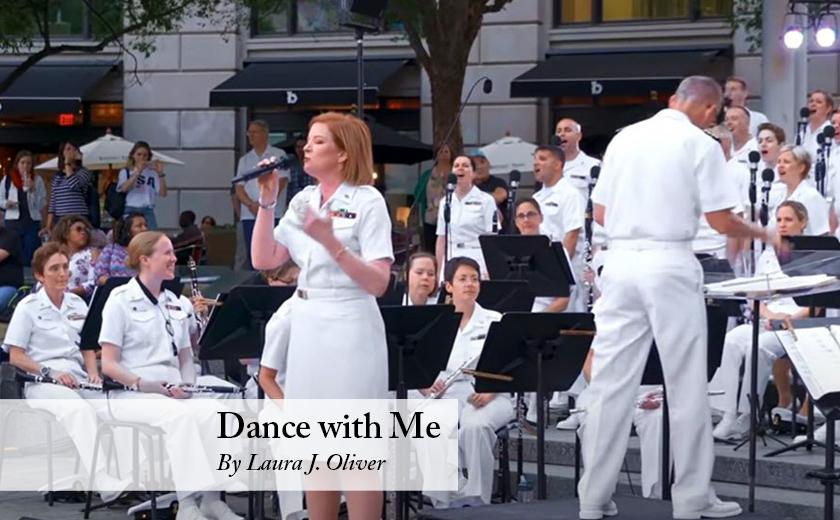The littlest among us will become the stars of the show tonight. Have you seen them?
Parents bump babies in strollers over brick sidewalks, tow toddlers like dinghies by the hand. Teens pause to check out the action. Tourists perch on pier pilings drawn by the electric anticipation in the air.
For years, the United States Naval Academy Band has performed free summer concerts at the Annapolis City Dock. Pristine yachts bob on their moorings while a saltwater breeze diminishes the flame of the setting sun. The bricks in the courtyard of Susan Campbell Park still hold the sizzle of summer but that’s just mid-Atlantic Maryland in July. This gathering begins as a desire for entertainment, but it becomes a desire for something else– something bigger and difficult to identify.
The band is made up of Musicians First Class wearing their immaculate dress whites for the occasion. A cap only partially conceals the lead singer’s shiny blond hair, her crisp shirt tucked neatly into the A-line skirt which ends professionally at her knees.
A ripple of applause greets her as she takes the stage. The crowd is on alert now, water bottles stowed, panting dogs drop belly down.
Strangers flash smiles at each other as the drummer turns on the magic, tapping the opening beat on the edge of his snare. The guitarist takes a run, and our formally attired lead singer opens the set by belting out Lady Gaga’s Bad Romance. There is such a disparity between her uniform and the music selection that it’s disarming.
Charming. A boundary breaker.
Like seeing your British Airways pilot rapping to Kanye on the flight deck. Like seeing your cardiologist singing karaoke in his scrubs.
But the real performance is in front of the stage, where about a dozen children have gathered—most under the age of 5. They swing and sway. They hop and up down like tiny lunatics. They are completely off the beat. Strangely expressionless, too.
They spin like little helicopters that have lost their tail rotors, collapse into each other both unselfconsciously and without acknowledgement, then pop to their feet to spin some more.
They are too small to have ever made a mistake, too young to bear the weight of regret, too innocent to need forgiveness. It is as if each is dancing in his own separate world, maybe the world from which they so recently arrived, and yet the proximity of the other children is required.
When I’m feeling isolated it’s as if I too need to step into the same stream in which others stand though I’m fishing on my own. I take my computer to Barnes and Noble or a coffee shop to be in community but not engaged. Alone but a lesser lonely.
It’s some kind of invisible energy that connects us—something that we need as much as the food that sustains us, or the air that we breathe, but can you name it?
If we could see magnetism or radiation, we might see goodwill sparking off every surface in the park on Tuesday nights. If affection was a vibration, if inclusion rose like heat off these bricks, or could be heard like the bells of St. Anne’s—if love were a color, or wellbeing a wavelength—we might see a reality we can feel but not prove.
There is no distance between us, and no one dances alone.
Laura J. Oliver is an award-winning developmental book editor and writing coach, who has taught writing at the University of Maryland and St. John’s College. She is the author of The Story Within (Penguin Random House). Co-creator of The Writing Intensive at St. John’s College, she is the recipient of a Maryland State Arts Council Individual Artist Award in Fiction, an Anne Arundel County Arts Council Literary Arts Award winner, a two-time Glimmer Train Short Fiction finalist, and her work has been nominated for a Pushcart Prize. Her website can be found here.



Write a Letter to the Editor on this Article
We encourage readers to offer their point of view on this article by submitting the following form. Editing is sometimes necessary and is done at the discretion of the editorial staff.